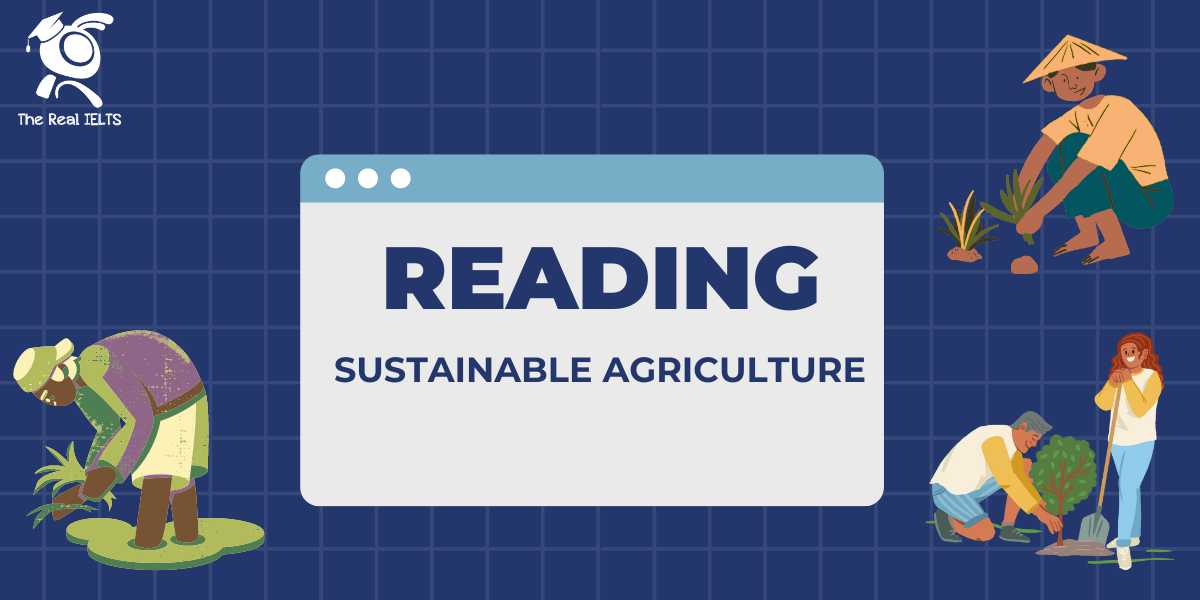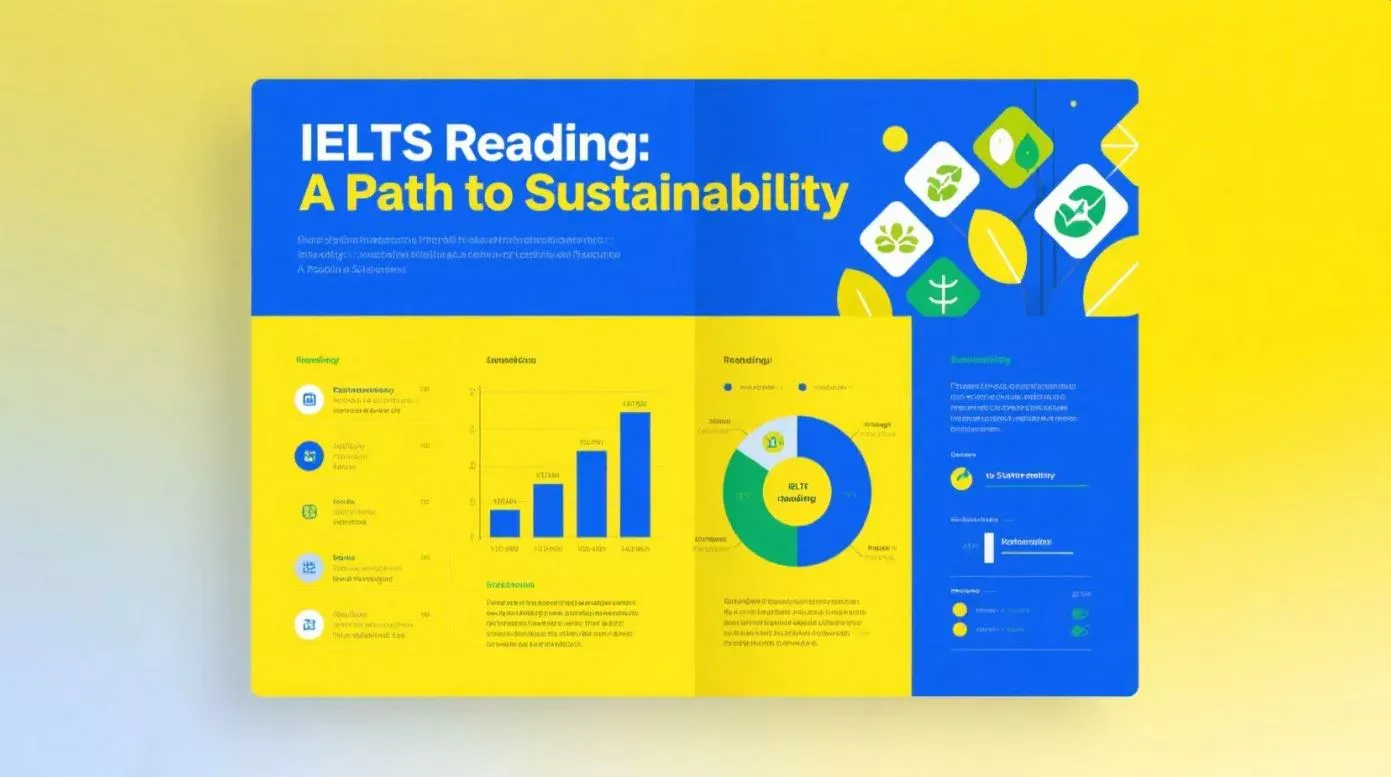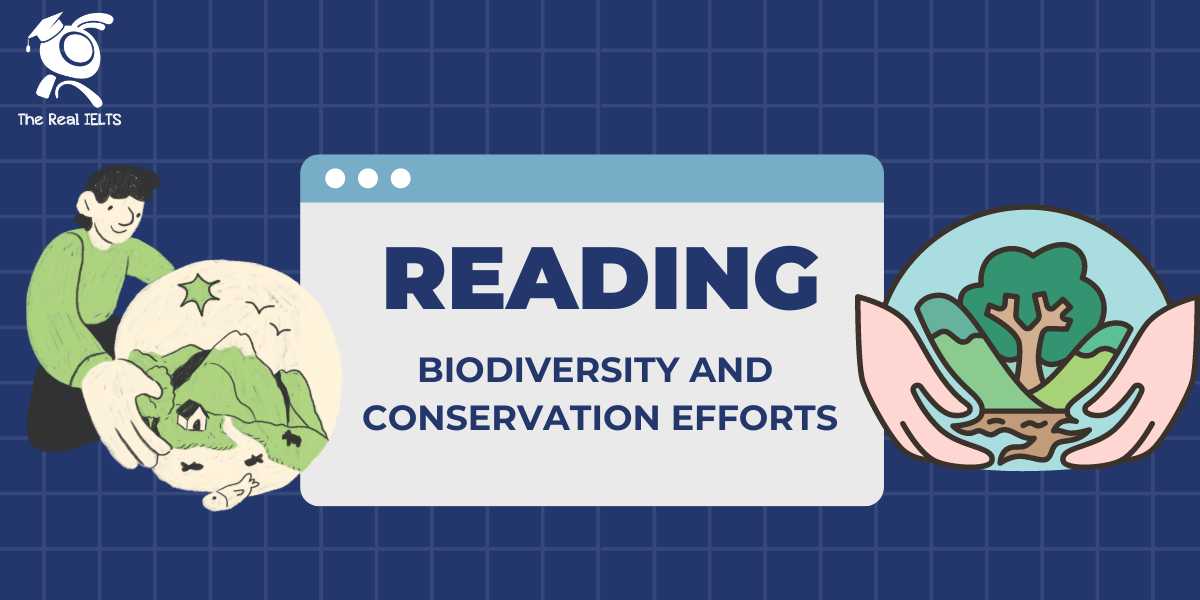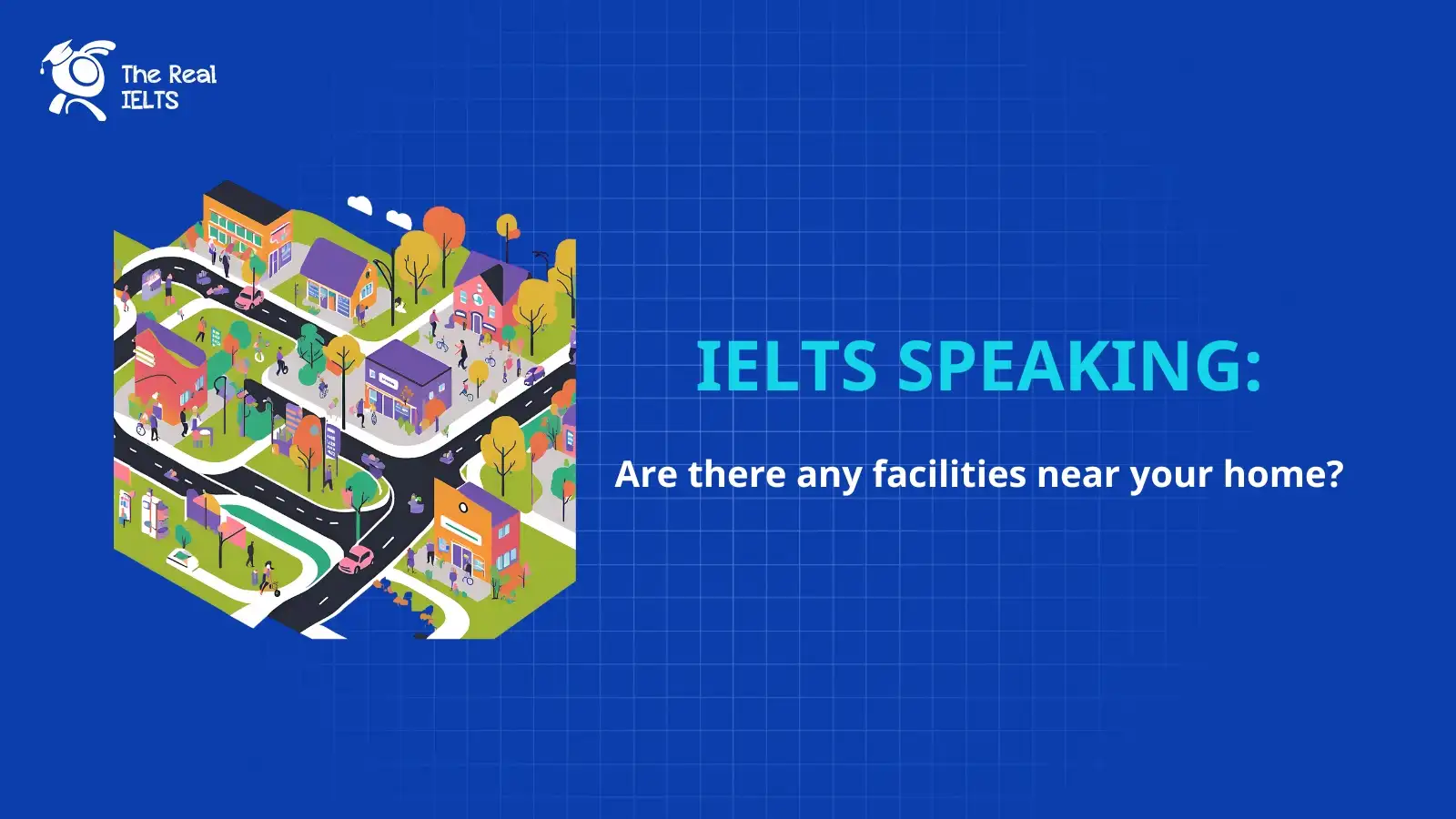Reading chủ đề nông nghiệp bền vững đã từng được đề cập đến trong một số đề thi IELTS nhưng ở kỹ năng khác nếu các bạn đã từng theo dõi series này của The Real IELTS. Sau đây là phần Reading.
Reading Passage: Sustainable Agriculture Practices
Introduction
Sustainable agriculture is a method of farming that aims to meet society’s food and textile needs in the present without compromising the ability of future generations to meet their own needs. This form of agriculture tries to find a good balance between the need for food production and the preservation of the ecological system within the environment.
Section 1: Principles of Sustainable Agriculture
Sustainable agriculture revolves around several key principles:
- Resource Conservation: This involves the careful management of natural resources such as water, soil, and biodiversity to prevent depletion and degradation.
- Environmental Protection: Sustainable practices aim to minimize pollution and reduce the impact on ecosystems.
- Economic Viability: Farmers need to make a living and sustain their operations, ensuring that farming is profitable while still adhering to sustainable practices.
- Social Equity: Sustainable agriculture supports the well-being of farmers and communities, ensuring fair wages and good working conditions.
Section 2: Techniques and Practices
There are numerous techniques and practices that fall under sustainable agriculture, including:
- Crop Rotation and Diversity: Planting different crops in a sequential manner to improve soil health and reduce pest and disease outbreaks.
- Agroforestry: Integrating trees and shrubs into crop and livestock systems to create more diverse, productive, and sustainable land-use systems.
- Organic Farming: Avoiding the use of synthetic pesticides and fertilizers, instead relying on natural processes and inputs to enhance soil fertility and biological activity.
- Conservation Tillage: Reducing the frequency of tilling the soil to preserve soil structure, enhance water retention, and decrease erosion.
- Integrated Pest Management (IPM): Combining biological, cultural, physical, and chemical tools in a way that minimizes economic, health, and environmental risks.
Section 3: Benefits and Challenges
Benefits
Sustainable agriculture offers numerous benefits, such as:
- Enhanced Biodiversity: Diverse agricultural systems support a variety of species, which can contribute to pest control and pollination.
- Improved Soil Health: Techniques like crop rotation and reduced tillage enhance soil structure and fertility.
- Water Conservation: Efficient water use and management practices help preserve this vital resource.
- Reduced Chemical Use: Lower reliance on synthetic chemicals improves environmental health and food safety.
Challenges
However, sustainable agriculture also faces several challenges:
- Economic Barriers: Transitioning to sustainable practices can be costly and time-consuming for farmers.
- Knowledge Gaps: Farmers may lack the knowledge or resources to implement sustainable techniques effectively.
- Policy and Market Support: Adequate policies and market incentives are needed to support sustainable practices and ensure fair prices for sustainably produced goods.
Section 4: Case Studies
- The Organic Farming Movement in Europe: Many European countries have adopted organic farming practices, leading to increased biodiversity and soil health while meeting consumer demand for organic products.
- Agroforestry in Brazil: Agroforestry systems in Brazil have helped restore degraded lands, increase carbon sequestration, and improve local livelihoods.
- Conservation Agriculture in Zambia: Farmers in Zambia have adopted conservation agriculture techniques, resulting in higher crop yields and improved resilience to climate change.
Questions
Questions 1-5: Matching Information Match the following techniques to their respective benefits or descriptions.
- Crop Rotation
- Agroforestry
- Organic Farming
- Conservation Tillage
- Integrated Pest Management
A. Involves planting different crops sequentially to improve soil health.
B. Combines trees and crops to create sustainable land use.
C. Avoids synthetic inputs and enhances soil fertility through natural processes.
D. Reduces soil disturbance to maintain soil structure and moisture.
E. Uses multiple strategies to manage pests in an environmentally friendly way.
Questions 6-9: True, False, Not Given
- Sustainable agriculture always leads to higher short-term profits for farmers.
- Organic farming prohibits the use of synthetic fertilizers and pesticides.
- Integrated Pest Management relies solely on biological control methods.
- Policies and market incentives are crucial for the widespread adoption of sustainable agriculture.
Questions 10-13: Short Answer Questions
- Name two key principles of sustainable agriculture.
- What is one major benefit of reduced chemical use in agriculture?
- Mention one challenge that farmers face when transitioning to sustainable agriculture.
- Give an example of a country where agroforestry has been successfully implemented.
Answers
Matching Information:
- A
- B
- C
- D
- E
True, False, Not Given:
- False
- True
- False
- True
Short Answer Questions:
- Resource Conservation, Environmental Protection
- Improved environmental health
- Economic Barriers
- Brazil
Đọc lại bài Reading cũ: Reading Skill Part 12: Space Exploration and Discovery.















